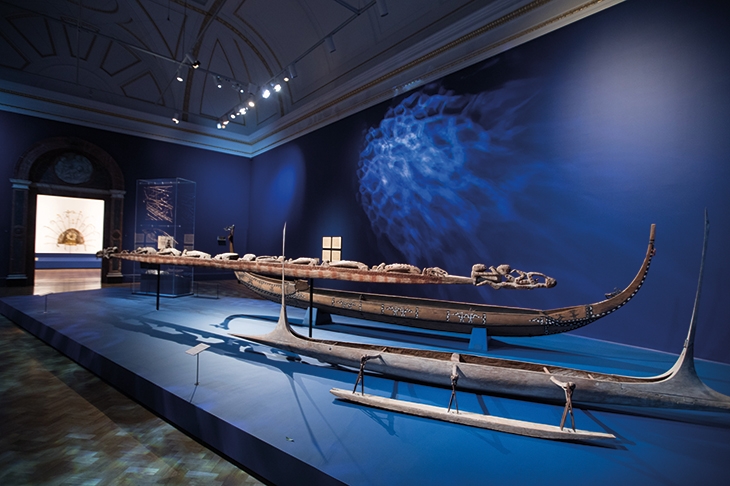At six in the morning of 20 July 1888, Robert Louis Stevenson first set eyes on a Pacific Island. As the sun rose, the land ‘heaved up in peaks and rising vales’. The colours of the scene ‘ran through fifty modulations in a scale of pearl and rose and olive’, rising into ‘opalescent clouds’. The whole effect was a ‘suffusion of vague hues’ shimmering so that mountain slopes were hard to distinguish from the cloud canopy above. Oceania, the new exhibition at the Royal Academy devoted to the region’s arts and cultures, is almost as beautiful as that dawn landscape, and just about as difficult to make out with any precision.
Nonetheless, it is full of the most marvellous things to see. One of the most spectacular is a ‘soul canoe’ from New Guinea, some nine metres long, containing a cargo, or perhaps crew, of crouching turtles, birds and human beings: a sculpture as powerful as any by Brancusi. A superb array of textiles includes — to choose an example almost at random — an early 19th-century feather cloak from the Hawaiian Islands, as densely coloured and powerfully patterned as any abstract painting but with the soft, rich texture of plumage. There are many more remarkable carvings, artefacts and adornments, far too many to list.
Interspersed here and there among them are works of contemporary art. Some, admittedly, are a bit dud, but they include a minor masterpiece of video art. ‘In Pursuit of Venus [Infected]’, 2015–17, by Lisa Reihana fills the largest gallery at the RA, and does so with aplomb. It takes the form of an enormously wide panorama, through which the camera pans, passing various groups of Pacific islanders and Europeans in 18th-century costume, whose voices can be distantly heard.
This is a restaging of the vignettes on some early 19th-century French wallpaper of episodes from Captain Cook’s voyages, including the Captain’s death and the investigations of the naturalist Joseph Banks.








Comments
Join the debate for just £1 a month
Be part of the conversation with other Spectator readers by getting your first three months for £3.
UNLOCK ACCESS Just £1 a monthAlready a subscriber? Log in